|
Oatland
Plantation
St. Simons Island, Georgia |
|

 |
|
Charles Stevens |
|
Capt. Charles George Stevens [CC B6-D] b. 1816 (1814?) Denmark d.
1865 Died Prisoner of War at Fort Delaware
m. Sarah Dorothy Hay [CC B6-E] b. 13 Sep 1819 Sunderland, England d. 25
Jun 1898 St. Simons Isl. ,Ga.
3 Children
(1) Sarah Dorothy Allen Stevens [CC B6-E] b. 25 Apr 1846 At Fort
Frederica d. 25 May 1881
(2) Elizabeth Lizzy W, Stevens [CC B6-H] b. 3 Aug 1848 At Fort Frederica
d. 5 Apr 1874
m. ?? Mims
(3) Isabelle Vincent Stevens [CC B6-A] b. 16 Oct 1850 St. Simons Isl., Ga
d. 14 Nov 1937
m. William Curtis Taylor [CC B6-B] b. 1847 d. 1917
|
|
|
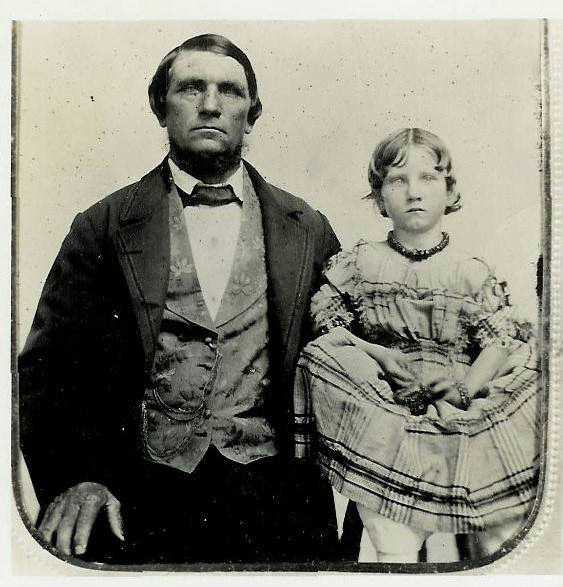 Captain
Charles Stevens (1816-February 1, 1865) and his daughter, Mary
Henrietta (“Aunt Het,” February 8, 1855-April 15, 1937). This
photograph was taken about 1860 and the original is owned by a descendent,
George Hay Stevens, Jr. Charles Stevens was born in Denmark and immigrated
to the United States, arriving at New Orleans in February 1836. He soon
moved to Georgia and became involved in the coasting trade, sailing sloops
and schooners along the Georgia coast. In December 1840 he signed an
Aliens Declaration in Savannah to become a U.S. citizen. On September 18,
1843, Stevens married Sarah Dorothy Hay who resided at Frederica on St.
Simons Island with her Uncle and Aunt, James Frewin and Sarah Dorothy
Rountree Frewin. Stevens settled at Frederica and eventually acquired
about 500 acres that included the old colonial fort and most of the old
town. At Frederica he established a modest plantation, plus he continued
to operate several coasting sloops and schooners in the coasting trade,
carrying coastal produce into and out of Savannah. Charles Stevens became
a member of Company I, 19th Battalion Georgia Cavalry in 1864 and was
captured by Union forces in late December 1864 while serving picket duty
on the Altamaha River. He was taken to the Union prison at Fort Delaware
where he died of an inflammation of the larynx on February 1, 1865. He was
buried at the prison cemetery at Finn’s Point, New Jersey, now a National
Cemetery. Mary Henrietta Stevens married John Campbell Currie and resided
on St. Simons Island her entire life. Captain
Charles Stevens (1816-February 1, 1865) and his daughter, Mary
Henrietta (“Aunt Het,” February 8, 1855-April 15, 1937). This
photograph was taken about 1860 and the original is owned by a descendent,
George Hay Stevens, Jr. Charles Stevens was born in Denmark and immigrated
to the United States, arriving at New Orleans in February 1836. He soon
moved to Georgia and became involved in the coasting trade, sailing sloops
and schooners along the Georgia coast. In December 1840 he signed an
Aliens Declaration in Savannah to become a U.S. citizen. On September 18,
1843, Stevens married Sarah Dorothy Hay who resided at Frederica on St.
Simons Island with her Uncle and Aunt, James Frewin and Sarah Dorothy
Rountree Frewin. Stevens settled at Frederica and eventually acquired
about 500 acres that included the old colonial fort and most of the old
town. At Frederica he established a modest plantation, plus he continued
to operate several coasting sloops and schooners in the coasting trade,
carrying coastal produce into and out of Savannah. Charles Stevens became
a member of Company I, 19th Battalion Georgia Cavalry in 1864 and was
captured by Union forces in late December 1864 while serving picket duty
on the Altamaha River. He was taken to the Union prison at Fort Delaware
where he died of an inflammation of the larynx on February 1, 1865. He was
buried at the prison cemetery at Finn’s Point, New Jersey, now a National
Cemetery. Mary Henrietta Stevens married John Campbell Currie and resided
on St. Simons Island her entire life.
|
|
|
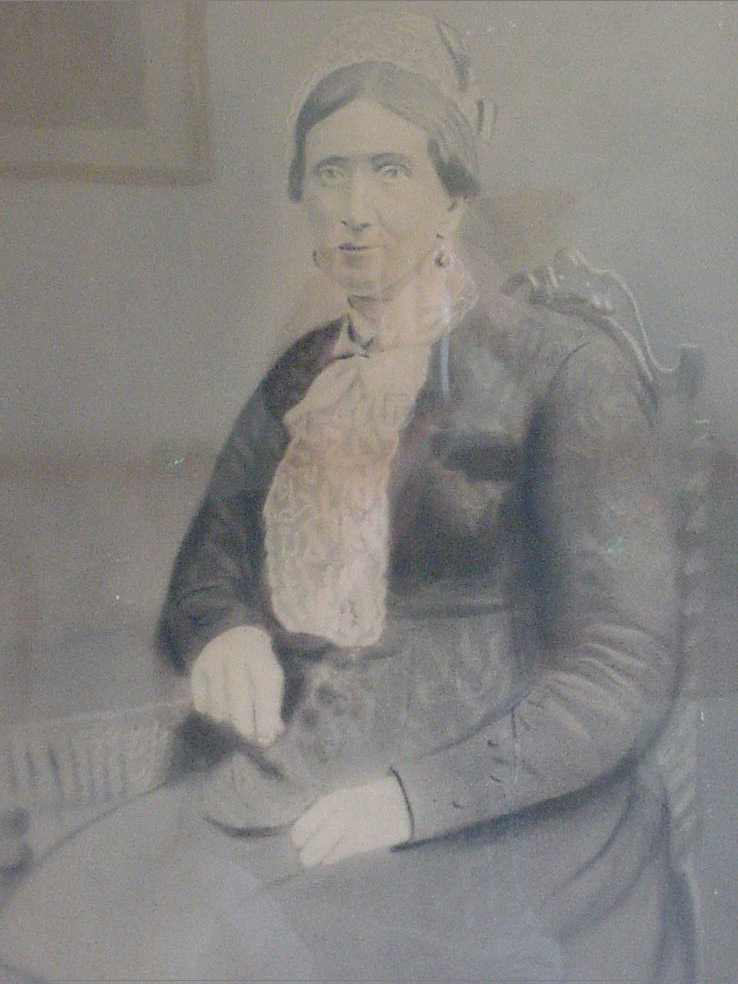
Sarah
Dorothy Hay Stevens (September 13, 1819-June 25, 1896). This
photograph was probably taken in the 1870s or 1880s. The original is in
the possession of Sally Taylor Jones, a great granddaughter. Sarah Dorothy
Hay was born in Sunderland England. She came to St. Simons Island to live
with her aunt and uncle, James and Sarah Dorothy Frewin, possibly in about
1838. In 1843 she married Charles Stevens and they had seven children, all
of whom resided on St. Simons at Frederica. During the Civil War, the
Stevens family evacuated St. Simons and resided on the mainland. After her
husband’s death in 1865 as a prisoner of war, Sarah Stevens took her
family back to St. Simons and reestablished their lives at Frederica. She,
with the help of her eldest daughter, Ann Frewin Stevens, managed the
family property. For a time Sarah Stevens served as postmistress at
Frederica. She died at the home of her son, John Lawrence Stevens, and is
buried at Christ Church, Frederica.
|
|
|
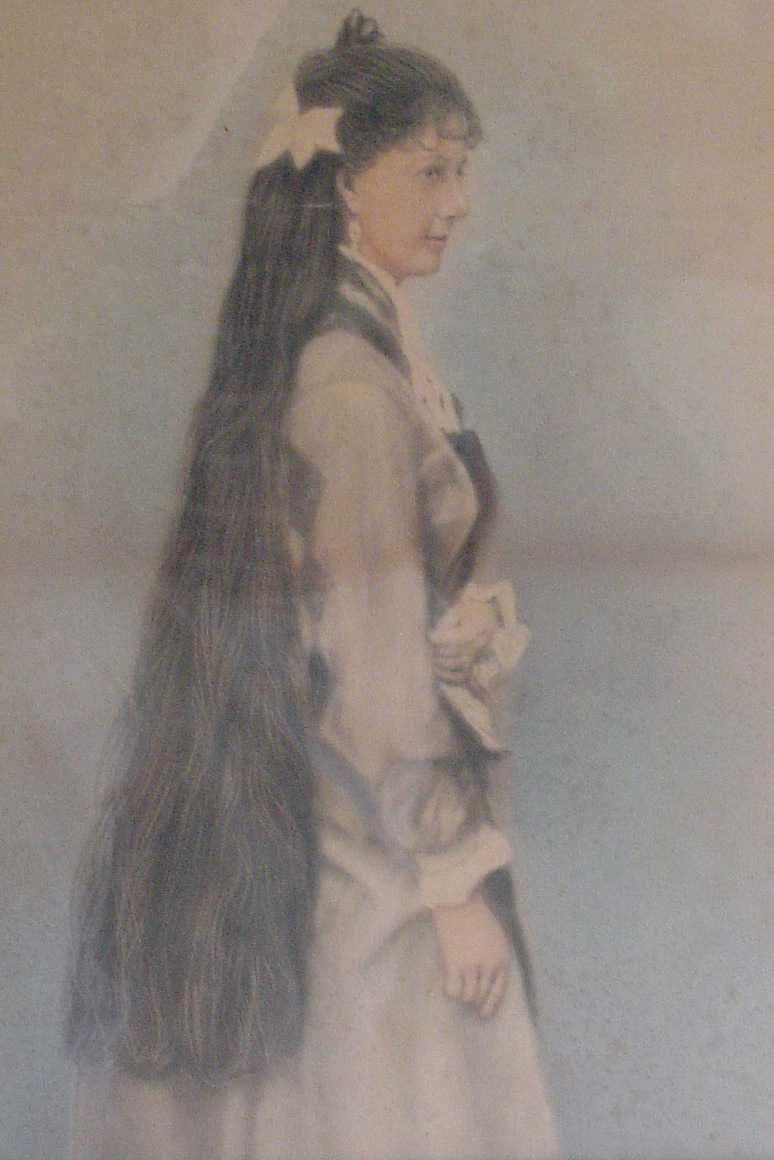
Isabelle Vincent Stevens Taylor
(October 17, 1850-November 14, 1937). This photograph was probably taken
in the 1870s or 1880s. The original is in the possession of Sally Taylor
Jones, a granddaughter. Isabelle Vincent Stevens was the fourth child of
Charles and Sarah Dorothy Stevens. Known as “Belle” she was born at
Frederica and resided in the old Stevens home her entire life. She married
William Curtis Taylor in 1875 and they had nine children, all of whom
lived on St. Simons and all of whom are buried at Christ Church,
Frederica. Isabelle inherited the old family home at Frederica and the
property containing the ruins of old Fort Frederica. In 1903 she donated
the fort ruins and a small area of surrounding land to the Georgia Society
of Colonial Dames.
|
|
|
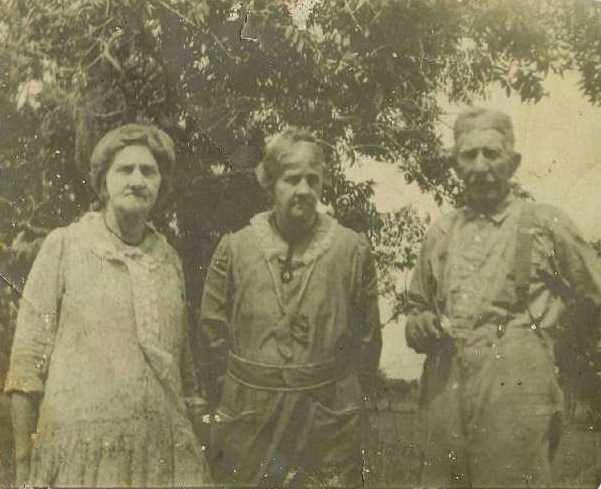 Three
of the children of Charles and Sarah Dorothy Stevens. Left to right these
are: Mary Henrietta Stevens Currie (“Aunt Het,” February 8, 1855-April 15,
1937); Isabelle Vincent Stevens Taylor (“Aunt Belle,” September 17,
1850-November 14, 1937); and John Lawrence Stevens (“Uncle Johnnie,”
September 12, 1852-August 6, 1929). This photograph was taken at
Frederica, probably in the mid to late 1920s. All three of these
individuals were born at Frederica, lived their entire lives there and are
buried at Christ Church Frederica. It is possible that John Stevens’
middle name “Lawrence” came from either James A.D. Lawrence or Antonio
Lawrence, both of whom were coasting captains and well known by John’s
father, Captain Charles Stevens. James A.D. Lawrence, resided at Frederica
in the 1830s and Antonio Lawrence seems to have worked in the coasting
trade with Charles Stevens in the 1850s, ultimately acquiring one of
Stevens’ vessels, the sloop Splendid. Another of Stevens’ children, his
daughter Elizabeth Watson, also seems to have been named for a coasting
captain and close friend. This person was William Watson, who was from
Denmark, like Charles Stevens, and who seems to have known and worked with
Stevens for many years. Both men took out Aliens Declarations in Savannah
on the same day in 1840 and they may have come from Denmark together and
worked together on coasting vessels. They seem to have remained close
friends over the years and, occasionally, William Watson served as captain
of one of Charles Steven’s trading vessels. During the Union occupation of
St. Simons in the Civil War John Lawrence Stevens, then a teenager,
remained on St. Simons with his uncle James Frewin to look after the
family property. They were among the few residents to remain on the island
during the war. They would sometimes signal with a lantern across the
marsh to the west where John’s father, Charles Stevens, could see from
Belle Point on the mainland. When 82-year-old James Frewin died in January
1863, young John Lawrence went to the south end of the island and notified
Acting Master Edward Moses, in command of the U.S. Bark Fernandina. In a
letter to his sister dated February 3, 1863, Moses wrote that “I sent out
a party of men on Sun morning and buried him [James Frewin] in the little
churchyard by the side of his wife & children he had a daughter on the
main almost in sight of his house when he died but no communication is
allowed Three
of the children of Charles and Sarah Dorothy Stevens. Left to right these
are: Mary Henrietta Stevens Currie (“Aunt Het,” February 8, 1855-April 15,
1937); Isabelle Vincent Stevens Taylor (“Aunt Belle,” September 17,
1850-November 14, 1937); and John Lawrence Stevens (“Uncle Johnnie,”
September 12, 1852-August 6, 1929). This photograph was taken at
Frederica, probably in the mid to late 1920s. All three of these
individuals were born at Frederica, lived their entire lives there and are
buried at Christ Church Frederica. It is possible that John Stevens’
middle name “Lawrence” came from either James A.D. Lawrence or Antonio
Lawrence, both of whom were coasting captains and well known by John’s
father, Captain Charles Stevens. James A.D. Lawrence, resided at Frederica
in the 1830s and Antonio Lawrence seems to have worked in the coasting
trade with Charles Stevens in the 1850s, ultimately acquiring one of
Stevens’ vessels, the sloop Splendid. Another of Stevens’ children, his
daughter Elizabeth Watson, also seems to have been named for a coasting
captain and close friend. This person was William Watson, who was from
Denmark, like Charles Stevens, and who seems to have known and worked with
Stevens for many years. Both men took out Aliens Declarations in Savannah
on the same day in 1840 and they may have come from Denmark together and
worked together on coasting vessels. They seem to have remained close
friends over the years and, occasionally, William Watson served as captain
of one of Charles Steven’s trading vessels. During the Union occupation of
St. Simons in the Civil War John Lawrence Stevens, then a teenager,
remained on St. Simons with his uncle James Frewin to look after the
family property. They were among the few residents to remain on the island
during the war. They would sometimes signal with a lantern across the
marsh to the west where John’s father, Charles Stevens, could see from
Belle Point on the mainland. When 82-year-old James Frewin died in January
1863, young John Lawrence went to the south end of the island and notified
Acting Master Edward Moses, in command of the U.S. Bark Fernandina. In a
letter to his sister dated February 3, 1863, Moses wrote that “I sent out
a party of men on Sun morning and buried him [James Frewin] in the little
churchyard by the side of his wife & children he had a daughter on the
main almost in sight of his house when he died but no communication is
allowed
|
|
|
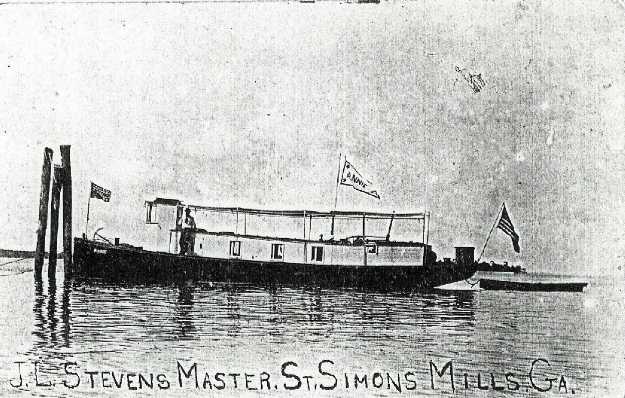 Boat Annie.
A work boat owned by Captain John L. Stevens and used to haul passengers
and supplies in the waters around St. Simons and elsewhere along the
Georgia coast. In his use of the Annie, John Stevens was following
in the footsteps of his father, coasting captain Charles Stevens. Boat Annie.
A work boat owned by Captain John L. Stevens and used to haul passengers
and supplies in the waters around St. Simons and elsewhere along the
Georgia coast. In his use of the Annie, John Stevens was following
in the footsteps of his father, coasting captain Charles Stevens.
|
|
|
|
|
|
|
|
|